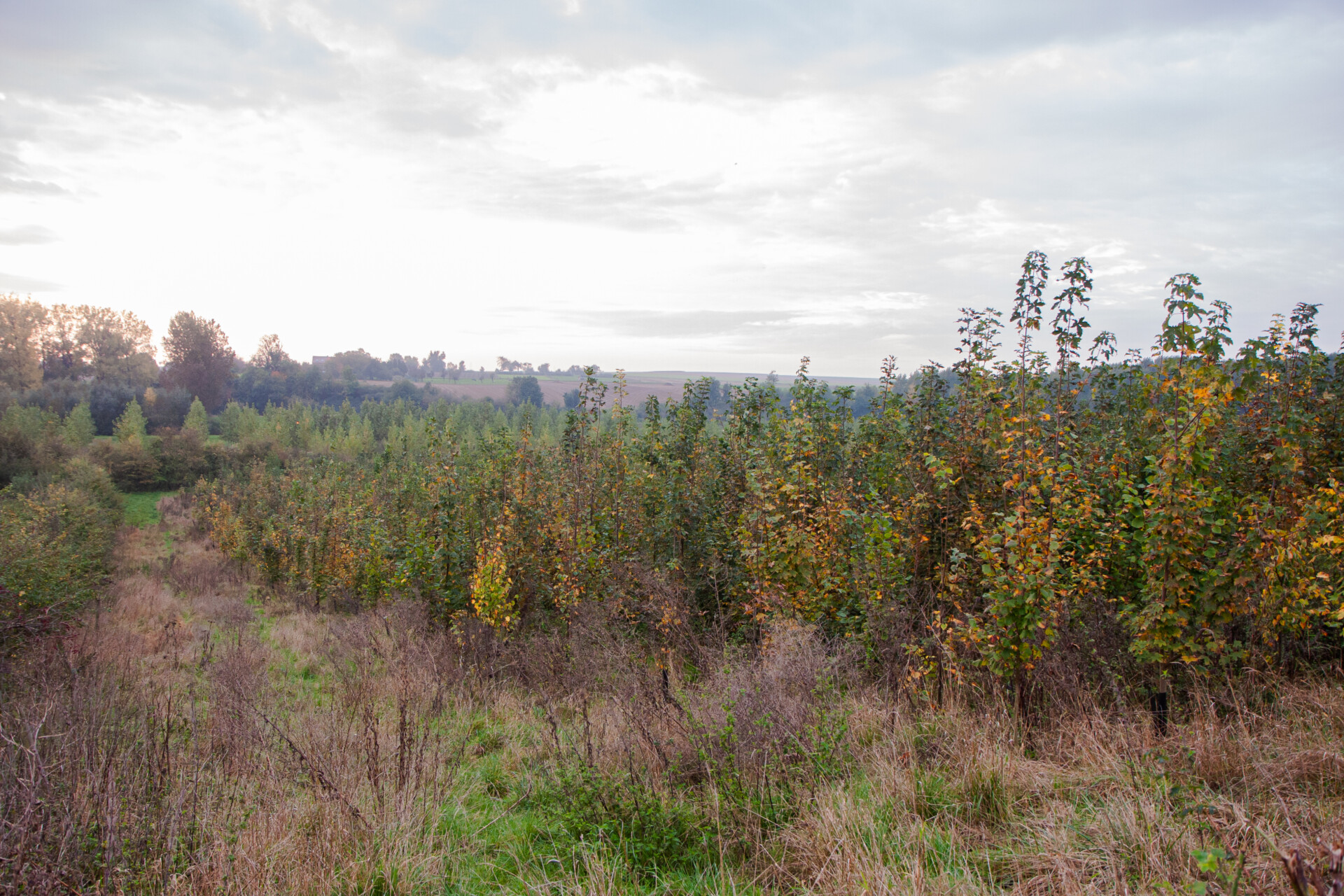How are our trees doing today?
Over the past years, we have been able to plant 75,000 trees in 14 locations in Belgium with the support of our sponsors, including Luminus, our technical partners, volunteers and through private donations. We have planted in the snow, rain and sunshine and our seasons have been similarly erratic. So how are our trees growing after the Forest in One Day planting actions? We’re happy to inform you that they are all doing well!
For the tree planting, we rely on the expertise of partners De Bosgroepen and Sylva Nova to identify suitable sites for our yearly planting and identify a healthy mix of tree species that will make the forests resilient, biodiverse, and less susceptible to diseases and pests. The forest experts also keep an eye on the trees to make sure that dead ones are replaced, and that everything is growing well.
Dry springs & summers
A young, recently planted tree has a very limited root system which is inevitably slightly damaged during transport from the nursery and planting on-site. Once in the ground, it needs some time to recover and get its roots properly grounded. So, although unfortunate, it is normal to lose some trees in the months after planting, especially with the drought we have been facing in recent years. Especially 2020 was a difficult year for our saplings, particularly in Hoeselt’s sandy soils, as there was a very dry spring combined with night frost. This caused about 50-60% of the trees to wilt and die. But luckily, our partners monitor the forests regularly to intervene when needed and the dead trees will be replaced in December 2022. Meanwhile, the young forest is included in a Flemish nature conservation plan which includes a European nature target, meaning that management is assured for at least 24 years.
A white Forest in One Day
Some concern was expressed to us after the tree planting action in Brakel in 2021, as the press conference with Prime Minister De Croo and Minister Van der Straeten showed us planting trees in the snow. Indeed, care needs to be taken in such weather conditions as it is not possible nor good for the trees to plant them in frozen soil. Even though it was very cold, the ground was not frozen and the trees planted by our guests of honor are still flourishing. In subsequent weeks, we worked with the owner to transform the 2-hectare site into a forest-to-be with 5,480 native trees and shrubs.
Storm and rain
In 2022 we were so happy to organize Forest in One Day again in three locations in Belgium together with our key partners. Nothing would stand in our way; COVID restrictions were lifted and there was no frost in the days ahead of the planting. And then we saw the news; heavy rain & hail predicted all over Belgium and even code orange for gusts of wind. Safety first, and in agreement with the commune of Crisnée, the planting action was postponed by one week.
Despite the less-than-ideal weather conditions, the planting in Waasmunster and Halen still went ahead, and many people braved the weather. In the weeks after the planting, the country was rocked by violent storms causing much damage throughout. We were very concerned about the survival of the saplings, but it turned out that they were solidly planted, and the storm didn’t cause any damage. Well done to all the planters!
Burundi
The great feature of Forest in One Day is that for every tree planted in Belgium, 60-80 trees are planted in Burundi by our local Roots & Shoots teams. A dazzling number of over 1 million young trees are planted there every year! These trees not only sequester CO2, but also help to protect against erosion, provide shade for schools and homes, and increase the habitats of wild animals like the chimpanzee. And even though the conditions over there are more favorable during the planting season than here, they have their own challenges.
Planting a tree in Burundi is successful; you plant it, and it grows. Fast. Much faster than in Belgium. The main challenges are at our tree nurseries where our teams work hard to grow our own saplings, all native species. There is a total of 28 tree nurseries throughout the country (26 for indigenous trees and 2 for indigenous bamboo). The young trees are vulnerable to diseases and floods are a particular threat to the hard work at the tree nurseries. Under the excellent guidance of our Roots & Shoots coordinator David these challenges have been professionally tackled which has allowed us to reach out tree-planting objectives.
Since 2019, the Jane Goodall Institute has partnered with Luminus to realize Forest in One Day. In addition, we receive contributions from other companies and private donors which allows us to plant more trees in Belgium. We are grateful for all support, small and large, as it allows us to make a difference in Belgium and in Burundi.
Any questions on our tree planting activities? Contact us at info@janegoodall.be.
Text: Anouska Plasmeijer
Image: Pascal Vanhees, Bosgroep Limburg
Teaser image: Hoeselt, january 2021, Pascal Vanhees, Bosgroep Limburg




